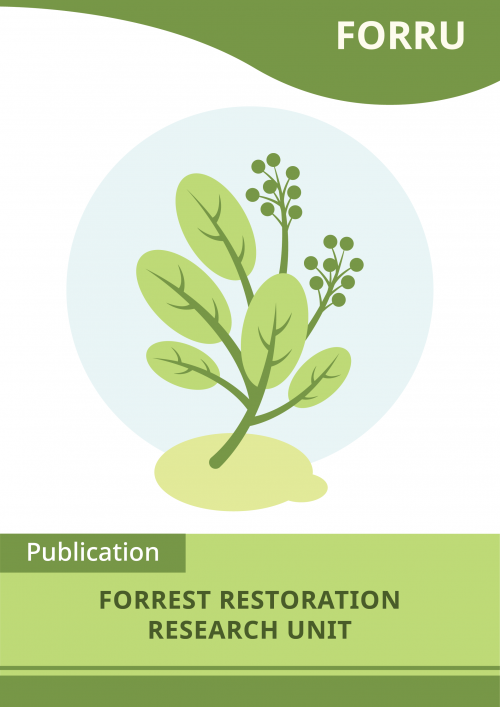Effects of forest restoration activities on the species diversity of ground flora and tree seedlings

Khopai, O., 2000. Effects of forest restoration activities on the species diversity of ground flora and tree seedlings.
This study was carried out to determine if planting native trees species and associated activities i.e. weeding and fertilizing in forest restoration, increases diversity of ground flora and tree seedlings. This research was conducted at a deforested area, previously covered by evergreen forest in Doi Suthep-Pui National Park. The study site consisted of 4 experimental plots: 2 planted plots with native tree seedlings in 1997 and 1998 (plots P97 and P98), with fire protection, application of fertilizer, and weeding, and 2 control plots in each year (plots C97 and C98), which no trees planting and any other activities except fire protection. In the planted tree plots, there was no cutting of naturally established seedlings. Glyphosate was used to clear the sites before planting and weeds were cleared around the planted trees and naturally established seedlings using hand tools. About 100g of fertilizer was applied to both natural and planted seedlings when planted. After planting, weeds were cleared using hand tools once per month in the rainy season. Fertilizer was applied (100g / tree) immediately after weeding. The vegetation, including planted trees, ground flora, naturally established trees (including seedlings, saplings, and mature trees) was surveyed using a walking survey and circular sample units, 2.5m radius which covered 24% of each subplot, three times: in the dry season, the middle and the end of the rainy season. From all surveys, 136 plant species (except planted trees) were found; 95 species in plot P98, 71 species in plot C98, 33 species in plot P97, and 41 species in plot C97. The total number of species of ground flora and naturally established trees found in plot P98 was 75 and 29, 51 and 27 in plot C98, 28 and 5 in plot P97, and 37 and 4 in plot C97. The total number of species of planted trees found was 30: 22 species in plot P98 and 14 species in plot P97.
In the first year after tree planting, the species richness and evenness of the ground flora in plot P98 increased when compared with plot C98, probably because weeding removed dominant perennials, allowing invasion of plot P98 by annual herbs especially in the family Compositae. Two years after tree planting, the diversity of the ground flora species in plot P97 had decreased, however, because the planted tree canopy closed, and reduced opportunities for establishment of new species of ground flora. Ground flora diversity was higher in plot C97, but evenness was lower than plot P97, since fire had removed most of the dominant weed species. Weeding and fertilizing accelerated the establishment of natural tree seedlings and increased the density of naturally established trees in the planted plots, although the increase in the number of naturally established seedling species found was equal in the 1997 plots and did not differ significantly in species richness of natural trees in both the plots 1997 and 1998. Most of the planted tree species were in good health and fast growing. All of the planted tree species except Nyssa javanica and Garcinia mckeaniana, were suitable species to plant for forest restoration in this area.

